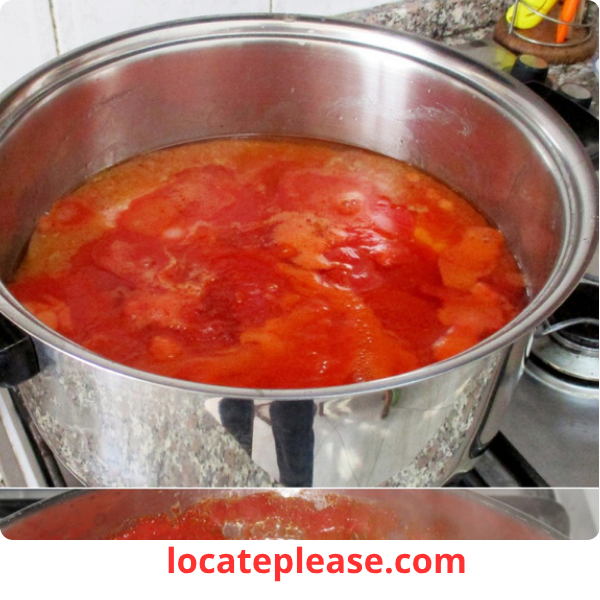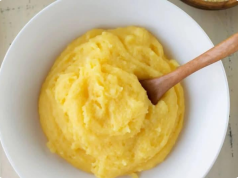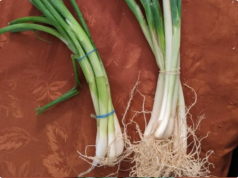There’s something magical about a perfectly crafted tomato sauce — rich, velvety, and bursting with deep, balanced flavor. Whether it’s tossed with pasta, spread on a pizza, or simmered into a stew, a great tomato sauce can transform a simple meal into something extraordinary.
And while restaurant-quality sauces may seem like a chef’s secret, the truth is: you can make them at home . With the right ingredients, techniques, and a little patience, your kitchen can produce a sauce that rivals your favorite Italian trattoria.
Here’s how to master the art of homemade tomato sauce — from selecting the best tomatoes to balancing acidity and finishing with a luxurious touch.
Step 1: Start with the Right Tomatoes
The foundation of any great sauce is high-quality tomatoes . The better the tomatoes, the better the sauce.
✅ Best Fresh Option:
- San Marzano tomatoes — grown in Italy’s volcanic soil, these plum tomatoes are sweet, low in acidity, and have thick flesh with fewer seeds.
- If in season, use ripe, red, in-season tomatoes — preferably heirloom or Roma varieties.
✅ Best Canned Option:
- Whole peeled San Marzano tomatoes (DOP-certified if possible) — crush them by hand for texture.
- Avoid pre-seasoned, pureed, or “pasta sauce” products — they often contain added sugar, oil, or preservatives that compromise flavor.
🍅 Pro Tip: Look for cans labeled “Pomodoro Pelati San Marzano dell’Agro Sarnese-Nocerino DOP” — the gold standard.
Step 2: Build Layers of Flavor (The Holy Trinity of Sauce)
Great sauce isn’t just about tomatoes — it’s about layered flavor development .
1. Sauté the Aromatics
- Heat 2–3 tablespoons of extra virgin olive oil in a heavy-bottomed pot over medium heat.
- Add 1 finely chopped onion and cook slowly until soft and golden (10–12 minutes).
- Stir in 3–4 minced garlic cloves and cook for 1 minute until fragrant (don’t let it burn!).
🔥 Low and slow is key — this builds sweetness, not bitterness.
2. Add Depth with Vegetables
- For natural sweetness and complexity, add:
- 1 finely grated carrot (melts into the sauce, balances acidity)
- 1 finely diced celery stalk (adds earthy depth)
Cook for 5–7 minutes until softened.
3. Deglaze with Wine
- Pour in ¼ cup red or white wine (Chianti or Pinot Grigio work well).
- Let it bubble and reduce completely — this removes alcohol and concentrates flavor.
Step 3: Simmer for Depth — How Long to Cook?
This is where patience pays off .
|
Fresh Marinara
|
30–40 minutes
|
Bright, light, fresh
|
|
Slow-Simmered Sauce
|
1.5–3 hours
|
Rich, deep, velvety
|
Why Simmer Longer?
- Long, slow cooking allows:
- Water to evaporate, concentrating flavor
- Natural sugars to caramelize
- Ingredients to meld into a harmonious blend
⏳ Stir occasionally and add splashes of water if the sauce thickens too much.
Step 4: Season Thoughtfully
Timing matters when seasoning:
- Add salt early — it helps draw out flavor during cooking.
- Pepper goes in mid-way — to preserve its aroma.
- Fresh herbs like basil, oregano, or thyme — add a sprig during cooking and remove before serving.
- Bay leaf — one per pot adds subtle depth.
🌿 Finish with fresh basil leaves — torn and stirred in at the end for a bright, aromatic pop.
Step 5: Fix Common Problems — Especially Acidity
Even the best sauces can turn out too acidic . Don’t panic — here’s how to fix it:
1. Add a Pinch of Sugar
- Start with ½ teaspoon of sugar — stir and taste.
- It doesn’t make the sauce sweet — it balances the acidity.
- Alternative: A small grated carrot (adds natural sweetness).
2. Add Fat for Smoothness
- Stir in a knob of butter or drizzle of olive oil at the end.
- Fat coats your palate and softens sharp flavors.
3. Simmer Longer
- Acidity mellows with time. Let it cook uncovered for another 20–30 minutes.
4. Baking Soda (Use Sparingly!)
- If all else fails, add a tiny pinch of baking soda — it neutralizes acid chemically.
- Watch for foaming — that means it’s working.
- Caution: Too much creates a soapy taste. Use only as a last resort.
Step 6: Perfect the Texture & Finish
For Smooth Sauce:
- Use an immersion blender to puree directly in the pot.
- Or transfer to a blender (cool slightly first — never blend hot liquids in a regular blender without venting!).
For Rustic Sauce:
- Leave it chunky by hand-crushing tomatoes and skipping the blend.
The Final Touch:
- Stir in:
- A tablespoon of butter (for silkiness)
- A drizzle of high-quality extra virgin olive oil (for aroma)
- A handful of fresh basil or parsley
✨ This is what makes it “restaurant-quality” — the luxurious mouthfeel .
Pro Tips for Next-Level Sauce
✅ Use Pasta Water:
When tossing sauce with pasta, add ½ cup of starchy pasta water . It helps the sauce cling and thickens slightly.
✅ Don’t Overcrowd the Pot:
Use a wide, shallow pan — it encourages evaporation and even cooking.
✅ Store & Freeze Smartly:
- Refrigerate for up to 5 days.
- Freeze in portions (ice cube trays for small amounts, jars or bags for larger) for up to 6 months.
✅ Make It Ahead:
Sauce tastes even better the next day — flavors deepen and mellow.
Final Thoughts: The Secret Ingredient is Care
You don’t need fancy equipment or rare ingredients to make a world-class tomato sauce. What you do need is:
- Quality tomatoes
- Time to simmer
- Attention to balance
- A little love
Whether you’re making a quick 30-minute marinara or a slow-simmered Sunday gravy, every spoonful should taste like comfort, warmth, and home .
So grab your pot, your best tomatoes, and a wooden spoon.
Your restaurant-quality tomato sauce is just a simmer away.
🍝 Buon appetito!










